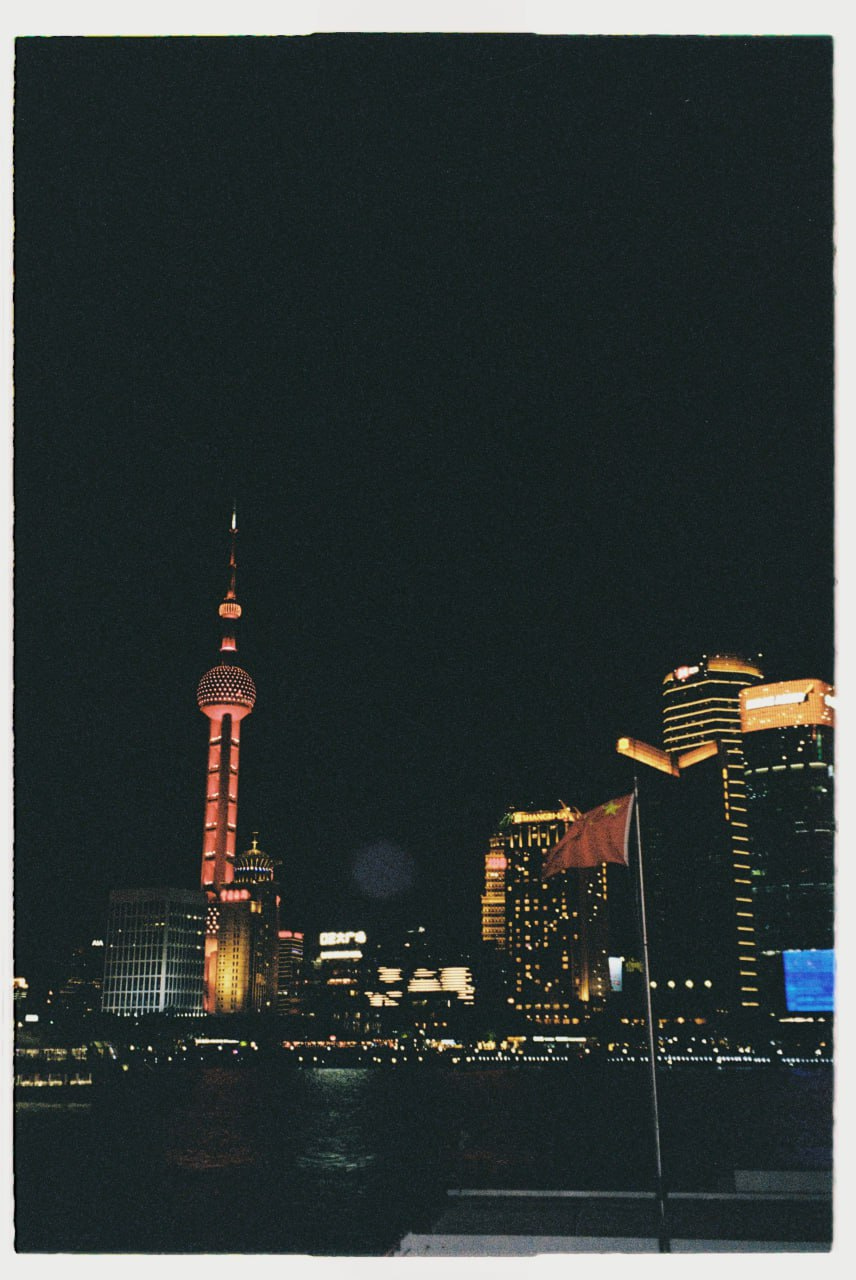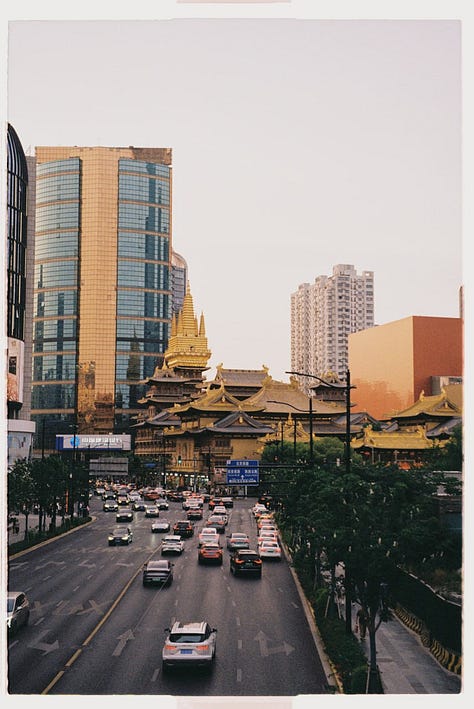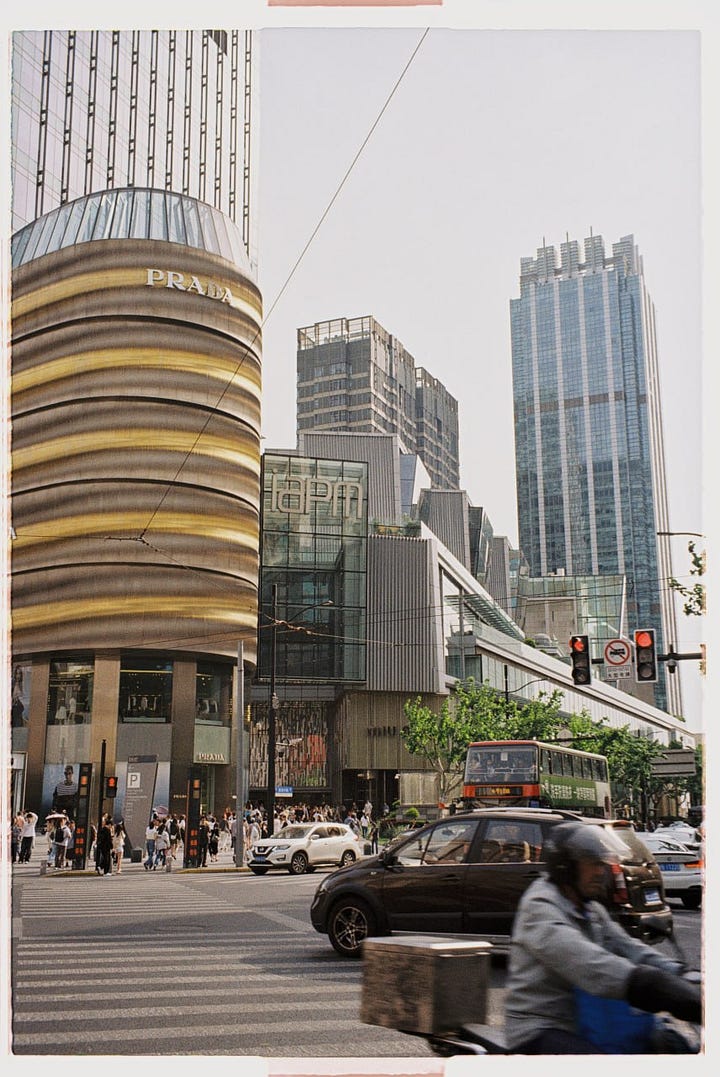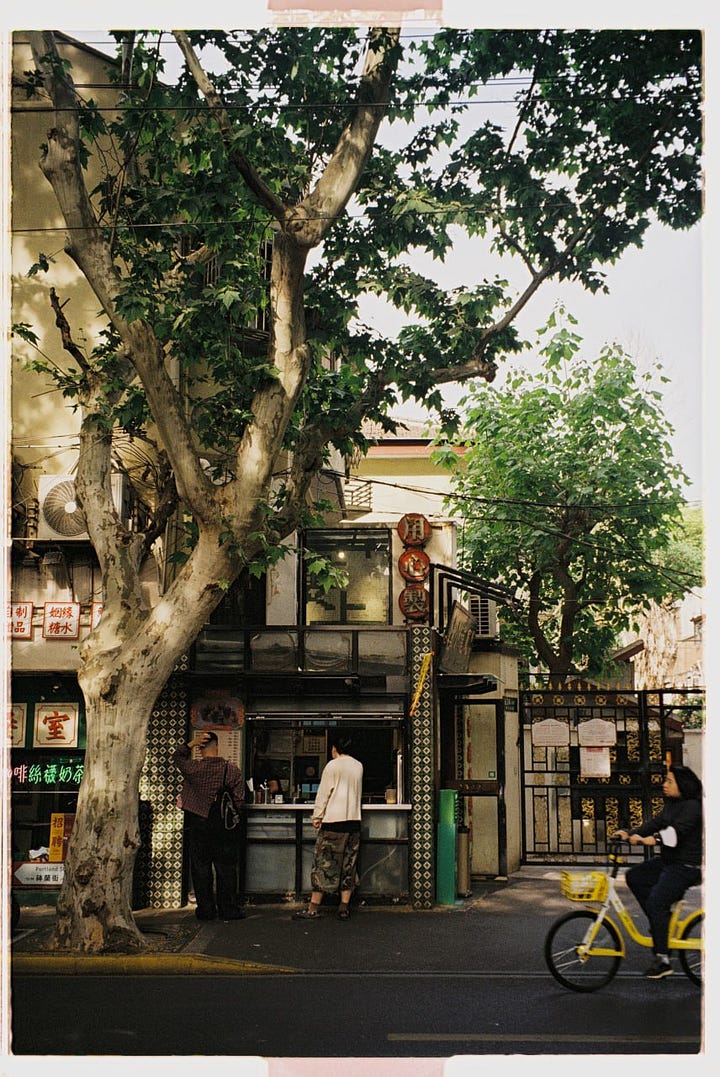Shanghai: Chaos, Glitter, and Ten Million Neighbors
Lost in translation.
It’s been a while since I last wrote about travel — this Shanghai piece has been sitting in drafts for too long.
What did I know about China? I had watched every episode of Asia Bling about rich Asians, I knew it’s better not to quarrel with the Chinese — so deeply involved in geopolitics — and that they eat the strangest parts of animals. And that people here live in “small villages” of ten million. I was afraid to go. I thought I’d be crushed by the visual and sensory overload, that the feeling of foreignness would become unbearable.

And here I am in Shanghai — ni hao, so to speak. Right upon arrival there’s a temperature check. Not a single word of English anywhere, and even the ATM keypad has its numbers scrambled, so you have to stab at it blindly. Inside the airport you can rent a karaoke booth or a massage chair, there’s even a nursery, but no “I love China” souvenirs that, you’d think, should be produced right here. Instead, in the middle of the terminal there’s a lush garden where you can breathe in some much-needed air.
The shock continues outside. Without a guide I would have broken down at the metro ticket machine: without Alipay, almost nothing works, cards are not accepted, and cash raises eyebrows. Personal space is nonexistent — people literally walk straight into you. Apple Pay doesn’t work, social media is blocked, everything smells and buzzes.



Food is its own form of torture and delight. Everywhere, enormous bowls of noodles in sauce with obscene amounts of sugar, devoured by miniature Chinese women as if carbohydrates had been outlawed. Everyone slurps loudly — the kind of sound my mother would have scolded me for as a child. Sweet dumplings with meat broth, sticky variations of rice, and, for the bold, duck’s blood jelly. Everything fried, oily, heavy with pork. Everything saturated, as if every dish contained a liter of MSG. It makes you want to rinse your mouth with chlorhexidine and chase it with digestive pills. At least in London’s Chinatown they give you forks — here the translator app doesn’t even know the word.
The oddities keep piling up. A marriage market, where mothers sit with signs listing name, address, education, and trade their sons. Homeless people with QR codes for WeChat instead of a hat for coins. And a national love for fakes. Acrylic nails glued on right in restaurants — you can chew on chicken feet while someone across the table gets a manicure. False eyelashes made of animal fur, seen not as shocking but as normal, even desirable, a marker of beauty — and something that makes Chinese women unexpectedly resemble Slavic ones.


The culture of gifting is also unfamiliar. Cigarettes are the classic wedding present, a mark of respect rather than a bad habit. And in more progressive circles they recommend giving a Tesla: in Shanghai they are on every street corner. It makes sense — Tesla has a Gigafactory right here in the city, the government hands out incentives for EVs, and charging stations are more common than specialty coffee shops.
Shanghai is, of course, no village, but a true green megapolis, three times bigger than Moscow. Here are stylish people, skyscrapers, sprawling parks. No wonder it was once called the Paris of the East, the Queen of the Orient, even the Whore of the Orient for its excess and prostitution in the 1920s. I want to come back, if only because all the European talking points and dramas fade here into a distant echo. We may all walk on the same planet, but while we’re busy arguing about who’s right and who’s guilty, there exists another world altogether. And it demands to be reckoned with.

